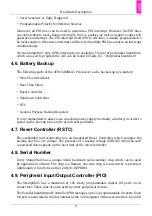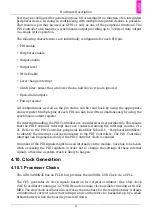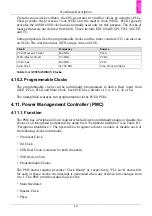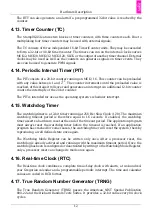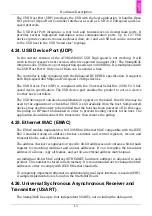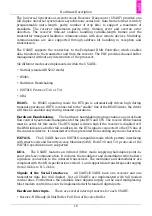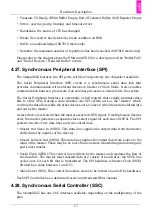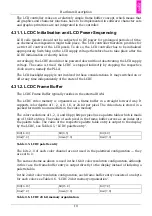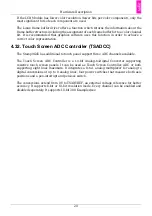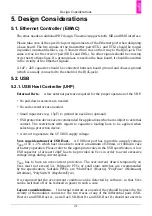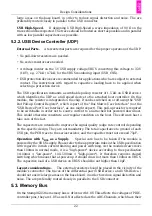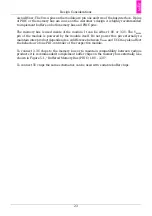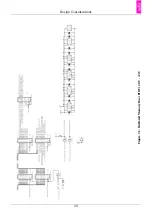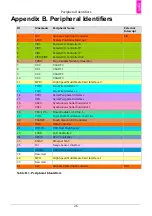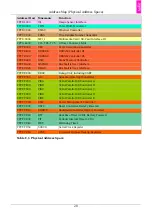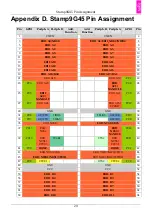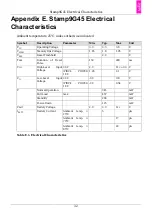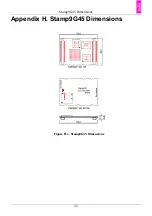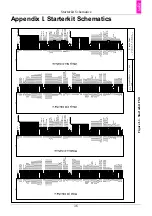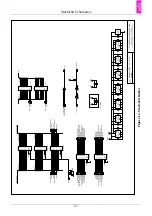
Design Considerations
22
large areas on the base board, in order to reduce signal distortion and noise. The are
preferably routed closely in parallel to the USB connector.
USB High-Speed.
If designing USB High-Speed a wave impedance of 90 Ω on the
traces should be respected. The traces shoud be routed as short as possible and in parallel
with as low parallel capacitance as possible.
5.2.2. USB Device Controller (UDP)
External Parts.
A few external parts are required for the proper operation of the UDP:
• No pull-down resistors are needed.
• No series resistors are needed.
• A voltage divider on the 5V USB supply voltage VBUS converting this voltage to 3.3V
(1.8V), e.g. 27 kΩ / 47 kΩ, for the VBUS monitoring input (USB_CNX).
• ESD protection devices are recommended for applications which are subject to external
contact. The restrictions with regard to capacitive loading have to be applied when
selecting a protection device.
The USB specification demands a switchable pull-up resistor of 1.5 kΩ on USB-
which identifies the UDP as a full speed device to the attached host controller. On this
module, this resistor is integrated on the chip. It can be switched on or off using the "USB
Pad Pull-up Control Register", which is part of the "Bus Matrix User Interface" (not the
"USB Device Port User Interface", as one might expect). This pull-up resistor is required
to be switchable in order not to source current to an attached but powered down host.
This would otherwise constitute an irregular condition on the host. The software has to
take care of this fact.
The capacitors are intended to improve the signal quality (edge rate control) depending
on the specific design. They are not mandatory. The total capacitance to ground of each
USB pin, the PCB trace to the series resistor, and the capacitor must not exceed 75pF.
Operation with V
BUS
as a Supply.
Special care has to be taken if the module is
powered by the VBUS supply. Please refer to the appropriate rules in the USB specification
with regard to inrush current limiting and power switching. As the module draws more
than 100mA in normal mode, it is a "high-power" device according to the specification
(<100mA = "low-power", 100..500mA = "high-power"). It therefore requires staged
switching which means that at power-up it should draw not more than 100mA on VBUS.
The capacitive load of a USB device on VBUS should be not higher than 10µF.
Layout considerations.
The external resistors should be placed in the vicinity of the
module's connector. The traces of the differential pair (USB- and USB-Device- )
should not encircle large areas on the base board, in order to reduce signal distortion and
noise. The are preferably routed closely in parallel to the USB connector.
5.3. Memory Bus
On the Stamp9G45 the memory bus is driven with 1.8V. This affects the voltages of PIOC-
controller pins, they are 1.8V as well. Not affected are the ADC-Channels, which have their

